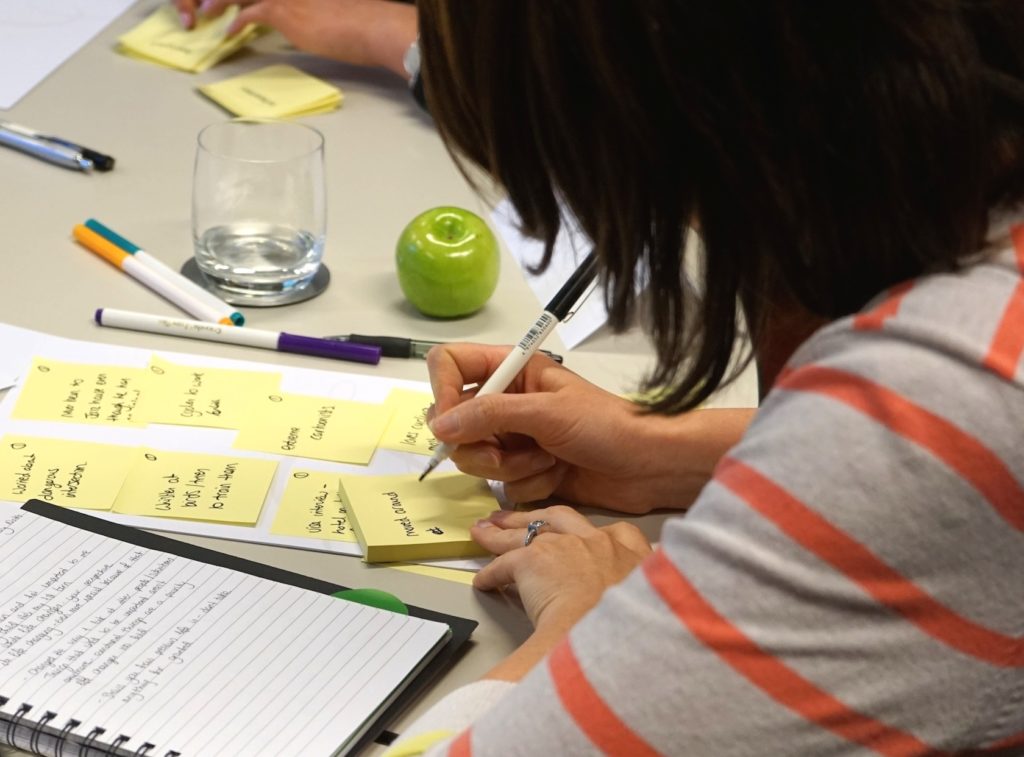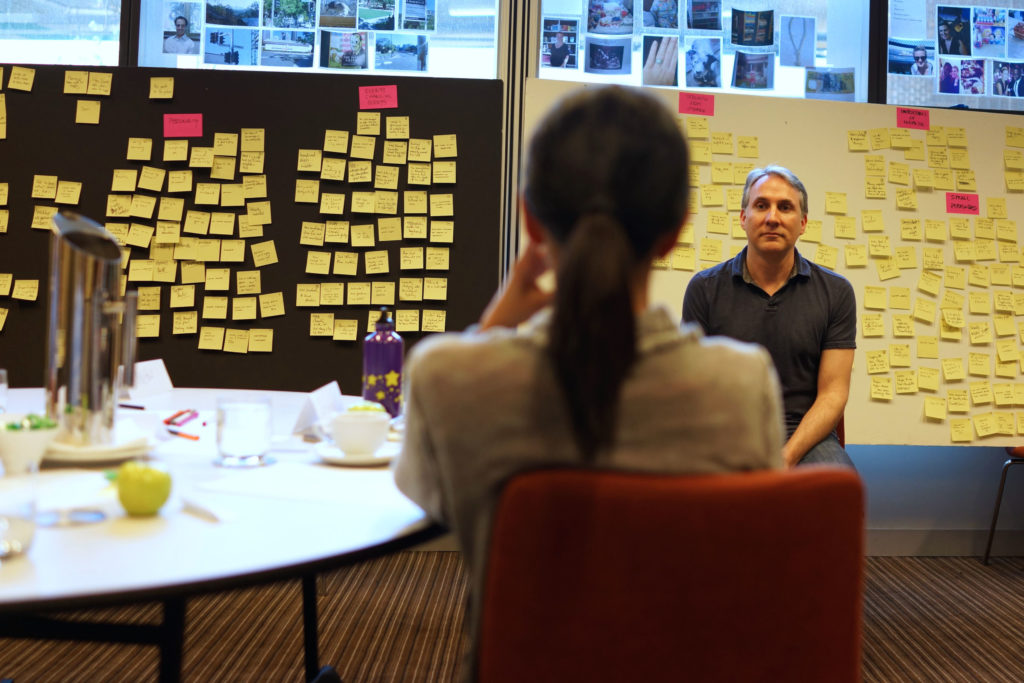Bringing design thinking to (real) life

About a year ago I had the privilege of attending a three day workshop on Design Thinking; a process which begins with a deep understanding of students’ needs or observable problems to ultimately create and prototype solutions to improve the student experience.
During the first morning of the workshop we were asked, ‘Do you understand your students?’ I answered an enthusiastic, ‘Yes’. Clearly, that wasn’t the correct answer as we were asked again, ‘You might think you do, but do you really understand them?’
Having spent over 10 years talking to thousands of students, analyzing needs-analysis forms, marking tests, reading countless survey responses, observing classes and occasionally teaching, I wanted to say, ‘To the extent that anyone can really know anyone else, I think I have a pretty good understanding of our students’. Instead I decided to bite my tongue, at least until lunch time.
During the workshop we looked at techniques for understanding what our students value, not just in terms of their learning experience, but in life generally. Questions and photographs were used to elicit key ideas which were written on post-it notes. The notes were then analysed to identify commonalities between diverse students and to generate insights into what is important in their lives.

The trainer then casually mentioned that ideally a team would spend two weeks in a room analyzing these post-it notes. Two weeks! After nearly choking on my coffee I felt a bit sad. From a brief stint in creative design and advertising, I know that two weeks is indulgent even for major projects. In a busy educational context, staff would be lucky to find two hours for this activity. Overall, I loved the Design Thinking workshop, but I left unsure how to apply the techniques in real life.
Understanding from real life
It has taken a year of pondering how to apply Design Thinking without committing my life to it, to realise that in the face-to-face student environment we are in a unique position. Our staff spend hours with our students every day, and we do understand our students quite well (without having to spend two weeks in a room with post-its).
When I was a Centre Manager I knew that conversations with students were my biggest window into their world. They gave me a different picture from the one captured in satisfaction surveys, but they were just as valuable. Essentially Design Thinking is about empathy and putting yourself in the students’ shoes. We already do many elements of Design Thinking in and out of the classroom and the staff I worked with are great at it.
On a campus, opportunities for insightful interactions and observations are around us all the time; the impromptu chats in the lift, the sleeping students in the break out areas, the irate student demanding CCTV fridge surveillance following a traumatic lunch theft, the heart-felt thank you and unforgettable gifts (everything from working models of Czech windmills to bean cake).
We discover that the emotion expressed over the missing lunch is sometimes about homesickness; other times it’s just about noodles. We come face-to-face with our students’ myriad of challenges and the life-changing experiences which make studying and working abroad so rewarding. With focused reflection, all these things offer insight into the student experience, they tell us what is important to our students and what they value. Unfortunately, the staff who are closest to our students often have the least amount of time to capture this knowledge, analyze and reflect on it. This means we often can’t credibly refer to what we know to be true; our anecdotes can’t hold their own against a pie chart.
Bringing Design Thinking to real life
Elements of Design Thinking can offer us a concrete process for capturing a richer understanding of the student experience. I could never have taken two weeks out to compile a board like the one below. But I could have added a couple of post-it notes to one every day to capture underlying values or observations.

Alone, I would have generated over a hundred reflections in less than a month. If the whole team had joined in, we’d have captured more than a thousand. Taking 10-20 minutes a few times a week to review these post-its and rearrange into emerging themes would have been do-able (most weeks). This would provide a Design Thinking structure we could work with, an evolving collection of insights to provide a different perspective into the collective student experience.
A process that works alongside us; Design Thinking we can live with.
If you have insights, personal experience, or other ideas about Design Thinking, come and be part of the conversation by commenting on this article or contacting Katrina.Hennigan@navitas.com
If you’re interested in trying out some Design Thinking techniques, please remember to check your business unit’s privacy policies or ethics committee to find out what level of detail it is appropriate for you to capture in your context. Design Thinking is about understanding underlying values rather than recording personal details.
